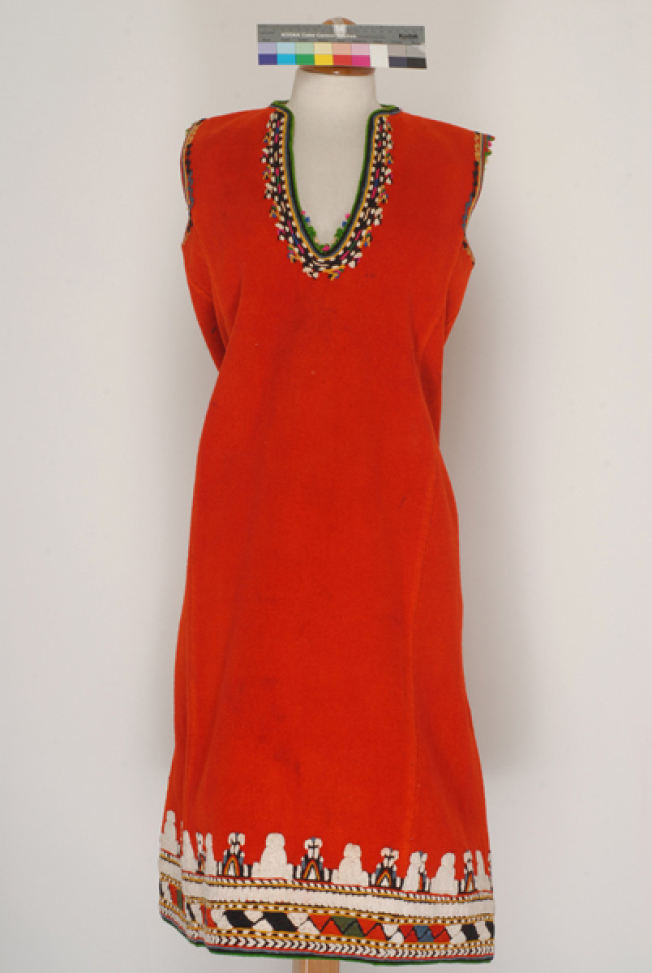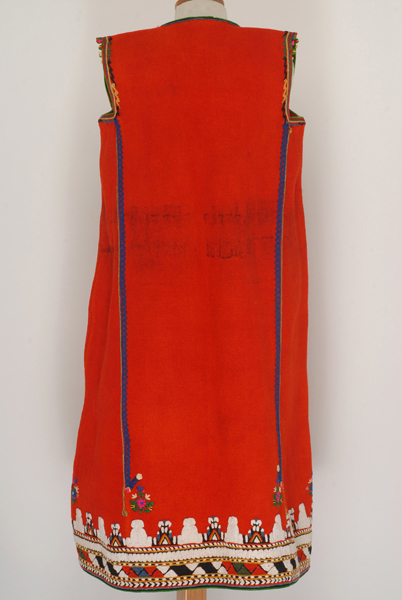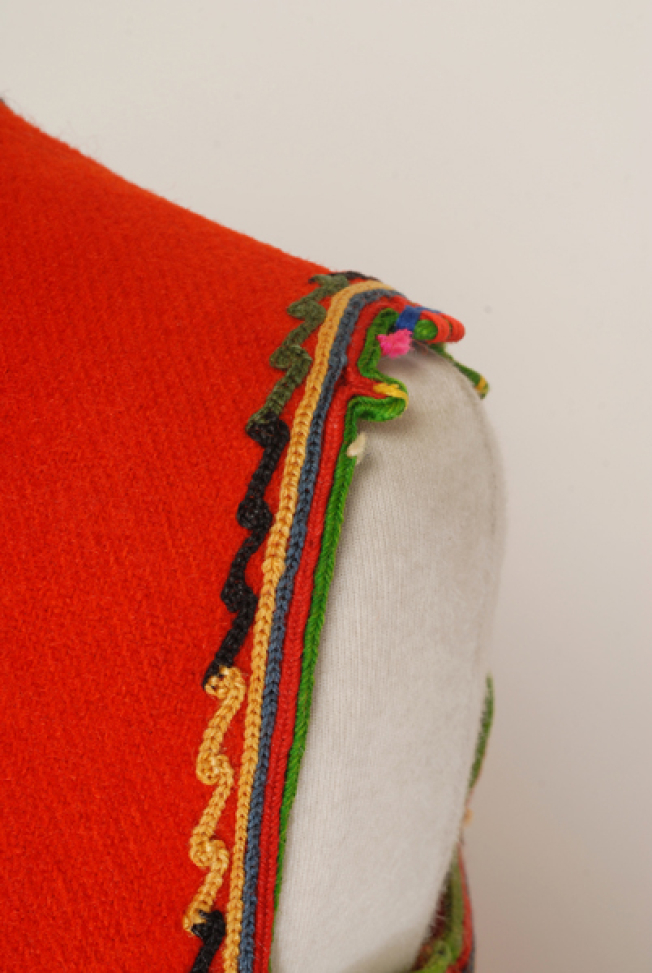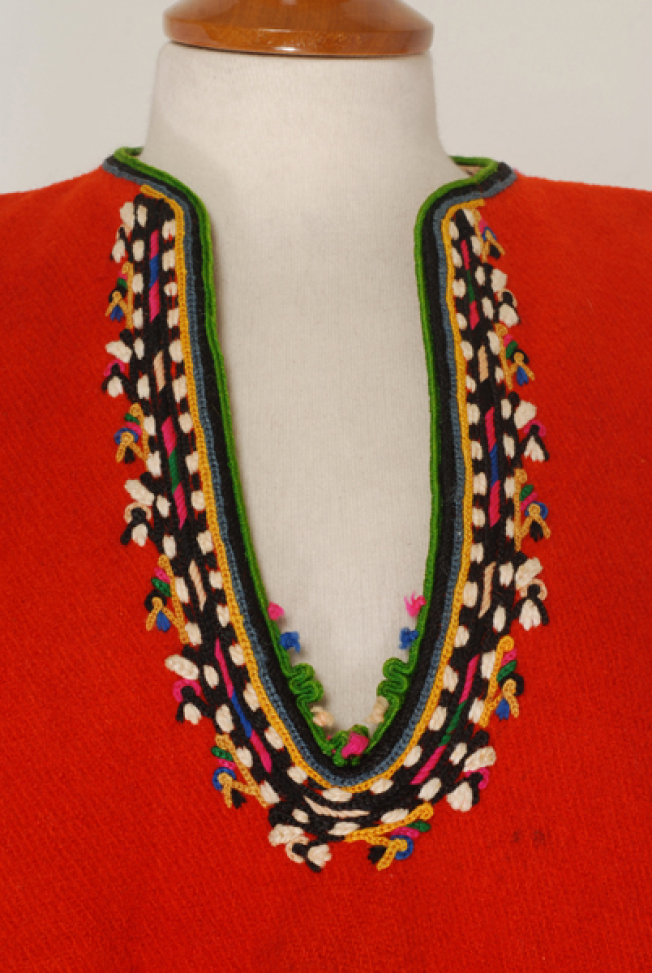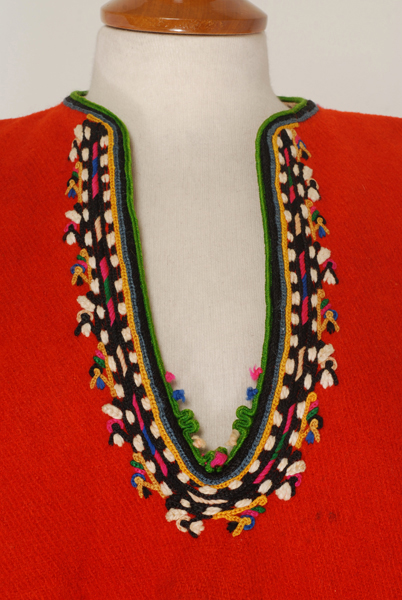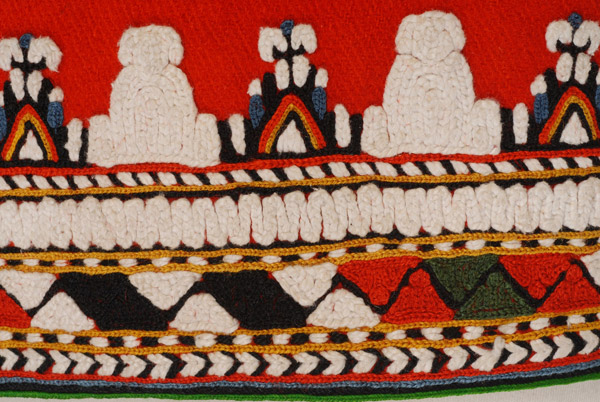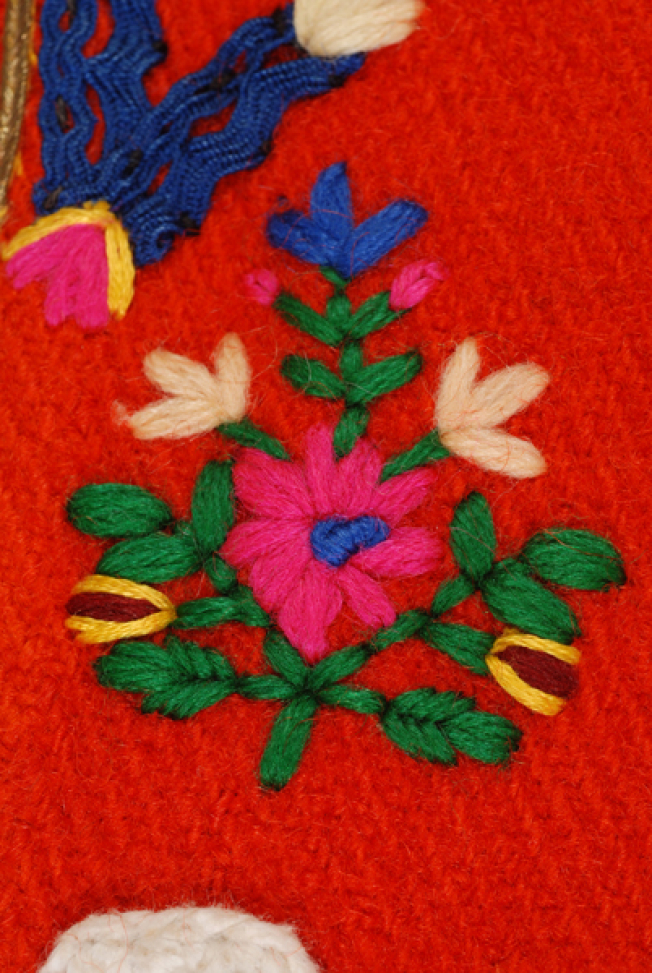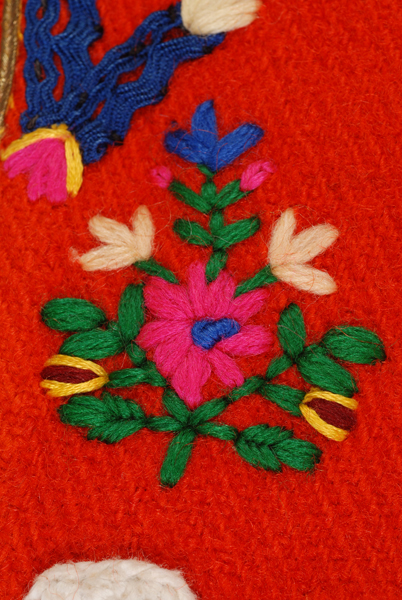foustani (dress)
4304/19
Foustani polit, dress of the young woman, at marriage age, and of the betrothed girl
Foustani polit, dress of the young woman, at marriage age, and of the betrothed girl
Detail of the decoration at the kavadoura, opening at the arms: gaitania and tieli thritour
Detail of the decoration at the traile, plastron: gaitania, tieli thritour and embroidery
Object Identity
Object ID Number
4304/19
Object name
foustani (dress)
Other / Local name
foustan polit
Style
peasant
Production date range
end of 19th century - beginning of 20th century
Part of outfit
No
Physical Description
Description
Φουστάνι πόλιτ, αμάνικο, γυναικείο φουστάνι κόκκινου χρώματος, που φορούν τα κορίτσια από τα 16 τους και οι αρραβωνιασμένες. Το μόνο κόκκινο φόρεμα που δεν έλειπε από καμιά. Είναι καμωμένο από αδίμτο (δίμιτο) σαγιάκι (μαλλί της νεροτριβής), από τις ίδιες τις γυναίκες στον αργαλειό. Ύστερα γινόταν το ντουλάπιασμα, το κέντημα στο χέρι και τέλος η βαφή. Τά άλικα κόκκινα φουστάν όπως αυτό δίνονταν για βαφή στο μπογιατζή, στη Μακρά Γέφυρα, την Αδριανούπολη ή το Γενίκοϊ. Τα βαμβακερά νήματα του κεντήματος κατά τη βαφή δεν "έπιαναν" χρώμα. Το φουστάν αποτελείται από ένα μονοκόμματο φύλλο υφάσματος μπρος - πίσω και στο πλάι φαρδαίνει με την προσθήκη τεσσάρων λοξών φύλλων, που ονομάζονται κλίντα, (δύο σε κάθε πλευρά) από το άνοιγμα της μασχάλης, καβαδούρα, και
κάτω. Εσωτερικά, το άνοιγμα του αυχένα είναι ρελιασμένο με υπόλευκο, βαμβακερό υφαντό. Για τη διακόσμηση πρώτα στρίφωνουν τα ανοίγματα και τα διακοσμούν με γαϊτάνια μάλλινα επάλληλα, πράσινο, κόκκινο, γκρι-σιέλ και κίτρινο. Η διαδικασία του κεντήματος χωρίζεται σε δύο στάδια. Το πρώτο, με το βάρδε ή κιτρίνισμα, είναι η εκτέλεση της κεντητής διακόσμησης του ποδόγυρου με χρωματιστά νήματα και βελονιά αλυσίδα. Το δεύτερο, με το μπάρδε ή άσπρισμα, είναι η εκτέλεση της διακόσμησης με λευκό, ελαφρά κλωσμένο βαμβάκι, με βελονιά θηλειά. Η διακόσμηση από κάτω προς τα πάνω είναι η εξής: πράσινο γκαϊτάνι, μαύρα, γκρι-σιέλ και κόκκινα βίτσα (σειρές από αλυσίδα βελονιά που χωρίζουν τις ζώνες διακόσμησης), αλατζά φούρκεζα (χρωματιστό κλαδί με διχαλωτή απόληξη), αλατζά μιλιγκόνα (χρωματιστή βελονιά γαζί ή πατητή), φαράσε (διαδοχικά τρίγωνα, κανονικά και ανάστροφα) κουδέλα (είδος πυκνής ζιγκ-ζαγκ γραμμής από λευκό βαμβάκι που σχηματίζει ταινία), αλατζά γιάνε (λοξή γραμμή) και πελιστέρε (μοτίβο ελεύθερο προς τα πάνω που δεν περιβάλλεται από σειρές). Οι πίσω ραφές είναι διακοσμημένες με τέσσερα κλαδάκια, τα ντάλε. Στην πλάτη, πάνω από τα δύο ντάλε, ορθώνονται επίρραπτη μπλε τρέσα του εμπορίου που φτάνει ως την καβαδούρα, ακολουθώντας την κατακόρυφη ραφή, η οποία είναι με τη σειρά της διακοσμημένη με γαϊτάνι διπλό, από κίτρινη μεταξωτή κλωστή και χρυσόνημα. Τέλος, γίνεται διακόσμηση στην τραϊλέ, τραχηλιά, και την καβαδούρα, με γκαϊτάνι, βίτσα και τιέλι θρίτουρ (κλειστό γαϊτάνι, ζιγκ-ζαγκ).
Decoration & Patterns
Decoration
geometric decoration
Decorative patterns / subjects
koudela, tieli thritour, yiane, farase, fourkeza
Decoration
stylized decoration
Decorative patterns / subjects
pelistere
Decoration
vegetal decoration
Decorative patterns / subjects
dale
Height
1.090
Width
0.380
Production
Maker / Designer / Brand
women themselves, boyiadjis
Production date range
end of 19th century - beginning of 20th century
Production place (Country | Geographic Area | Prefecture & Region)
-
Eastern Thrace (Mega Zafouli)
Material
band
cotton
cotton thread
fullen wool fabric
gold thread
silk cordon
wool cordon
Techniques
applique
handwoven fabric
handwoven fabric,
dimity fabric
handwoven fabric,
nerotrivi (fulling-tub), ntoulapia
traced design embroidery,
chain
traced design embroidery,
daring or bouble running
traced design embroidery,
loop
Use
Population / Cultural / Ethnic group
refugees
User
woman
Age
teenage girl
Occasion
festive
Purpose
It is worn by young ladies at the marriage age from their sixteen age on
Date range
end of 19th century - beginning of 20th century
Population / Cultural / Ethnic group
refugees
User
woman
Age
teenage girl
Status
betrothed girl
Occasion
festive
Date range
end of 19th century - beginning of 20th century
Place of use (Country | Geographic Area | Prefecture & Region)
-
Eastern Thrace (Mega Zafouli)
Acquisition
Acquisition method
Untraced Find
Documentation
Research bibliographic references
Image license
Use the file or the thumbnail of the image according to the license:
CC BY-NC-ND 4.0
Attribution-NonCommercial-NoDerivatives







